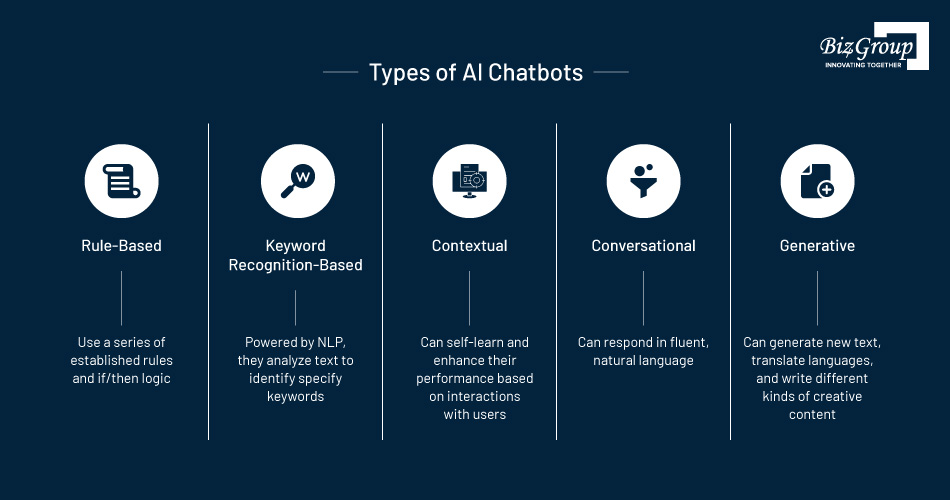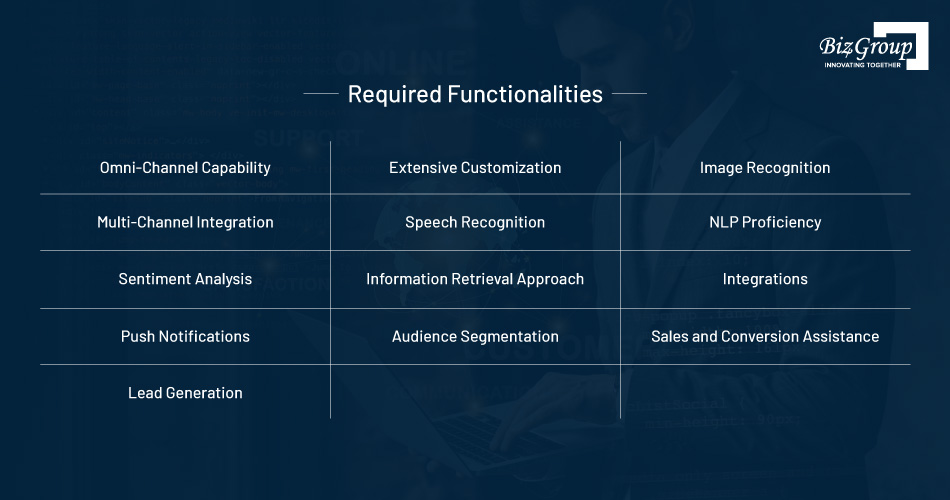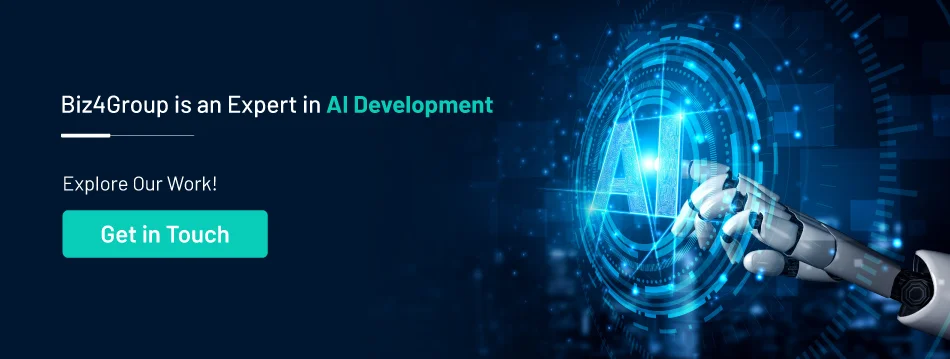Enterprise AI Chatbot Development Cost – Let's Explore in Detail
TL; DR
- A simple chatbot that can answer questions about a product or service might cost around $10,000 to develop.
- A chatbot with the ability to generate personalized content and make reservations might cost around $50,000 to develop.
- A chatbot that is customized to the specific needs of a business and integrated with third-party software might cost around $100,000 to develop.
It is important to note that these are just estimates. The actual chatbot development cost will vary depending on the specific needs of the business.
The chatbot development cost depends on several factors like the required features and integrations, and the development team's expertise. We’ll explore all of it in detail in this blog post. So, if you’re interested in knowing, read it till the end.
Imagine Evelyn, the HR manager, overseeing a large number of employees. Her typical day is often filled with repetitive questions that take up a significant portion of her working hours.
These questions might sound like: "Hey Jenny, I can't remember my corporate email password. What should I do?" "Could you guide me through the process of reserving a conference room?" "Eve, do you remember when we get paid?"
This situation could be seen as an underutilization of Evelyn's skills and a drain on company resources. However, there's a solution at hand. By implementing enterprise AI assistants (chatbots) as a part of your company's operations, you can transform them into a repository of knowledge.
These bots can quickly learn about your organization and provide immediate assistance to employees.
This proactive approach would drastically reduce the time Evelyn spends manually searching for relevant information. As a result, she can allocate her time to more meaningful tasks, ultimately saving both her valuable potential and the company's resources.
But the catch is, how much does it cost to build such a system? Of course, spending billions of dollars for a simple ChatGPT integrated customer service AI would not make sense as you can employ real human beings with such an investment.
So, let's explore the cost of enterprise AI assistant development and understand the business benefits it can bring.
Factors that Affect Enterprise AI Chatbot Development Cost
The cost to develop enterprise-grade AI assistants depends on several factors such as the type of chatbot, the required features and scale, the area of implementation, implementation strategy, and more.
Let’s discuss the factors that affect the enterprise AI chatbot development cost:
1. The Type of Chatbot You Want to Build
Modern enterprise chatbots are commonly linked with AI technology, which enables them to handle inquiries without human intervention. Chatbots that follow predefined scripts and utilize decision tree structures may suffice for basic FAQ queries but struggle to meet the demands of enterprises.
When considering enterprise chatbot development, you have four main options to choose from. The cost to build each of them differs from the other where the first one costs the least and the fourth one costs the most:

A. Rule-Based Chatbots
These chatbots construct conversational paths using a series of established rules and if/then logic. Once you define the parameters for your chatbot (such as facts, rules, query types, words, and synonyms), it can quickly provide answers. However, rule-based enterprise chatbots falter when faced with queries that deviate from their trained scenarios and cannot adapt through interactions.
B. Keyword Recognition-Based Chatbots
Enabled by natural language processing (NLP), these chatbots can aptly respond by analyzing text to identify specific keywords from free-form input. This approach offers users greater flexibility and a more natural conversational experience. Nevertheless, keyword recognition-based chatbots struggle when a query contains an abundance of keywords pertaining to diverse questions. To guide the conversation, companies often utilize a combination of menu-based and keyword recognition-based chatbots.
C. Contextual Chatbots
Supported by ML and AI, contextual chatbots possess the ability to self-learn and enhance their performance based on interactions with users. These chatbots retain memories of past conversations and can refine their responses through deep learning. They can address a wide range of customer inquiries, including tasks like food ordering, ticket booking, and support for supply chain operations.
D. Conversational AI Chatbots
These bots rely on deep learning, NLU, and NLP to capture, interpret, and analyze users' voice commands. We’re way past robotic voices; conversational chatbots respond in fluent, natural language. Similar to other contextual chatbots, voice bots can learn from their interactions, and you can train them with industry-specific scenarios to better understand your audience's requests.
E. Generative AI Chatbots
Gone are the days of chatbots that can only respond to pre-programmed questions; generative AI chatbots can generate new text, translate languages, write different kinds of creative content, and answer your questions in an informative way. Similar to other conversational chatbots, generative AI chatbots can learn from their interactions, and you can train them with industry-specific data to better understand your audience's needs.
If you wonder how Generative AI Chatbots are different than Conversational ones, here are the differentiating pointers:
- Generative AI chatbots can create new content, while conversational AI chatbots can only respond to user queries.
- Generative AI chatbots require more training data than conversational AI chatbots.
2. Required Functionalities

A remarkable chatbot encompasses a blend of attributes that contribute to its excellence. These pivotal features are pivotal for enhancing your business's performance:
Omni-Channel Capability: An AI-infused chatbot that operates seamlessly across devices and communication channels guarantees a unified and smooth user experience. By centralizing customer data from diverse channels, you can eliminate redundancy and provide consistent user support.
Extensive Customization: The ability to extensively customize your chatbot empowers you to mirror your company's identity and values. This is achieved through tailored conversation flows and contextualized interactions with customers. The chatbot's proficiency in understanding natural language, including regional nuances, as well as incorporating emojis, gifs, and images, fosters this personalized experience.
Image Recognition: Equipping your chatbot with image recognition capabilities enables it to identify objects within images, respond to inquiries, and engage in meaningful discussions about customer-uploaded images using advanced deep learning techniques.
Multi-Channel Integration: Seamlessly integrating your chatbot into various messaging platforms frequented by your customers streamlines information flow to a single channel for your team, ensuring efficient communication.
Speech Recognition: Incorporating speech recognition empowers your chatbot to convert voice commands into text, which is then processed similarly to written input.
NLP Proficiency: Natural Language Processing (NLP) prowess enables your chatbot to comprehend and analyze human inputs, facilitating fluid and effective conversations. NLP also enables continuous learning from every interaction.
Sentiment Analysis: A subset of NLP, sentiment analysis, aids in identifying and gauging emotions, leading to an improved understanding of conversation tone. Based on this sentiment, your chatbot tailors responses to suit the emotional context.
Information Retrieval Approach: Employing an information retrieval approach equips your chatbot to offer human-like responses autonomously. It categorizes user queries, matches them with database entries, and delivers relevant answers using pre-stored or trained options.
Integrations: Seamless integrations with various data sources, such as custom services, business applications, and third-party apps like Salesforce, Slack, Zoho CRM, Mailchimp, Zendesk, and Google Sheets, empower your chatbot to collect data, automate tasks, and enhance efficiency.
Push Notifications: Utilizing push notifications enables your chatbot to re-engage users, sharing updates, reminders, insights, and promotional messages, fostering ongoing user engagement.
Audience Segmentation: By gathering pertinent details, your chatbot segments the audience into distinct categories, facilitating personalized interactions and tailored responses.
Sales and Conversion Assistance: AI chatbots possess the ability to guide customers through pricing inquiries, product recommendations, and appointment bookings, ultimately improving conversion rates and customer engagement.
Lead Generation: Chatbots play a vital role in capturing high-quality leads by initiating interest through contextually relevant questions.
While not all these features are obligatory, selecting the right combination can be challenging. An experienced AI development company can assist in crafting a customized enterprise chatbot tailored to your specific business needs.
3. Complexity of the Chatbot
The complexity of a chatbot can be measured by the following factors:
- The number of user queries it can understand and respond to.
- The number of features it has.
- The level of customization it offers.
- The accuracy and fluency of its responses.
- The ability to learn and adapt over time.
A more complex chatbot will require more time and effort to develop and will therefore be more expensive.
For example, a chatbot that can understand and respond to a wide range of user queries, that can generate personalized content, make reservations, and handle customer service inquiries, and that is customized to the specific needs of a business would be very complex. As a result, the virtual assistant development cost would be correspondingly high.
4. Expertise of the Developers
The expertise of the developers who are working on the chatbot can also affect its cost. Experienced developers can work more efficiently and produce higher-quality code. As a result, they tend to charge more for their services.
The cost of hiring experienced developers will vary depending on their location and their level of expertise. For example, developers in the United States will typically charge more than developers in Asia and some parts of Europe.
5. Time to Market
The time to market is also a factor that can affect the cost of chatbot development. If a business needs to deploy a chatbot quickly, it will have to pay more for expedited development. This is because developers will need to work longer hours and may need to hire additional help.
6. Cost of Maintenance and Support
Once a chatbot is deployed, it will need to be maintained and supported on an ongoing basis. This includes fixing bugs, adding new features, and adapting the chatbot to changes in the business environment. The cost of maintenance and support can be significant, especially for complex chatbots.
7. Scale of the Training Data
The cost of training data can also affect the cost of chatbot development. If a chatbot is trained on a large dataset of text and code, the cost of training data will be higher. This is because it can be expensive to gather and label a large dataset; you’ll require to adopt an AI development platform that can handle a massive amount of data and process it.
Overall, the chatbot development cost in an enterprise scenario will vary case by case. If you want to get an exact estimate for your enterprise chatbot development cost, get in touch with Biz4Group’s AI chatbot experts.
How Enterprise Virtual Assistants Drive Business Value?
Developing enterprise AI assistants can assist companies in streamlining business processes and scaling rapidly.
An AI-powered chatbot can aid your employees in prioritizing tasks, scheduling meetings, composing reports, and managing routine assignments. Let’s explore the key advantages:
Providing Omnichannel Support
Two-thirds of consumers express their greatest frustration in customer service as the need to repeatedly explain the same information - HubSpot. AI-driven chatbots retain records of every interaction across diverse communication channels, ensuring consistent user support.
Enhancing Customer Engagement
Chatbots possess the intelligence to analyze customer information and past inquiries, facilitating swift and meaningful conversations. A report by Statista demonstrates that one-third of consumers are highly content with the service provided by chatbots. Additionally, the same study reveals that only one in ten consumers is dissatisfied with their interactions with a chatbot.
Cost Efficiency
Chatbots can handle numerous mundane, repetitive tasks such as processing insurance claims or generating invoices. They significantly reduce the time your staff dedicates to addressing customer queries, allowing them to concentrate on high-value customer interactions.
24/7 Customer Support
In the contemporary business landscape, speed and convenience are of utmost importance. A substantial majority (two-thirds) of customers anticipate rapid query resolution, with 40% expecting round-the-clock customer service. Thankfully, chatbots are capable of fulfilling this demand.
What we’ve mentioned is only a portion of the reasons why adopting an enterprise AI assistant can confer a competitive edge upon your company. Nonetheless, not all chatbots are equally proficient in specific tasks. Therefore, let's delve into the diverse types of enterprise chatbots and the respective purposes they can serve.

Let’s Build Enterprise-Grade AI Assistants for Your Specific Use Case
You can’t just jump on the ship of AI and build the best AI assistants the world has ever seen. You need to experience the tests and failures in order to build the best chatbots.
We, at Biz4Group have been building AI chatbots since 2014 when the language models became popular. We’ve been an active participant in the growth of conversational AI and now, the generative one as well.
Hence, if your organization is planning to adopt AI virtual assistants or wants to build an assistant for other businesses out there, look no further than us.
Let’s discuss your project.
 info@biz4group.com
info@biz4group.com 

















































